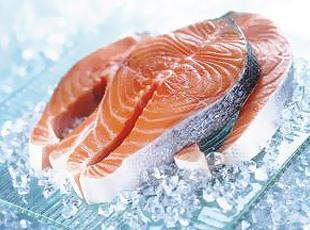Campaign against farmed salmon supported by Slow Food
Though some companies are making efforts to provide clean feed, the lack of traceability makes consumers unable to know where the farmed salmon come from.
 It was a present-day Viking invasion that inspired Alexandra Morton to begin her decades-long battle against the perils of farmed salmon. The American-born marine biologist had moved to a remote inlet in British Columbia in the 1980s to continue her research into killer whales. But when the whales started disappearing she switched her research to the Norwegian-owned salmon farms that were proliferating along the coast to be close to the huge US market. “They came into my community and just wiped us out,” she said. “Now there are 27 Norwegian feed lots and only eight of us left in the village.”
It was a present-day Viking invasion that inspired Alexandra Morton to begin her decades-long battle against the perils of farmed salmon. The American-born marine biologist had moved to a remote inlet in British Columbia in the 1980s to continue her research into killer whales. But when the whales started disappearing she switched her research to the Norwegian-owned salmon farms that were proliferating along the coast to be close to the huge US market. “They came into my community and just wiped us out,” she said. “Now there are 27 Norwegian feed lots and only eight of us left in the village.”
First the Acoustic Harassment Devices (AHDs) used to drive away seals from the farms also drove away the killer whales. Then wild salmon populations crashed, taking away the local fishermen’s livelihoods, as well as a keystone species with an essential place in the food chain. Alexandra began campaigning against the AHDs in 1993, eventually leading to their withdrawal in 2001, and began in-depth research into the effects of the salmon farms. They include virulent new viruses and diseases spreading to wild fish, sea lice outbreaks killing young wild salmon, toxic algae blooms caused by the farms’ nutrient-rich waste and escaping Atlantic salmon, an exotic species, destabilizing wild native populations.
Farmed salmon also have a much higher fat content than wild fish, and toxins accumulate in this fat, like POPs (Persistent Organic Pollutants), which have been related to problems like autism and ADHD in children. Pregnant and breastfeeding women in particular should avoid farmed salmon, says Alexandra, as the toxins will be passed on to their babies, and POPs are a critical threat to the normal development of babies’ brains.
Canada has also allowed the production of genetically engineered salmon eggs, which Alexandra says is a huge concern to human health and ecology. With no laws requiring GM products to be labeled in the US, consumers can’t know if farmed salmon is genetically modified or not. The lack of traceability has other implications: “Marine Harvest [another Norwegian seafood company] says they’re going to clean their feed, but how do we know what company we’re eating? If you go to the supermarket it just says farmed salmon, and how do we know how clean the product is-where are the numbers?”
It’s at the supermarket that Alexandra buys samples which she then tests for viruses, and says she has found traces of three lethal European viruses which could easily spread to wild salmon. “But the government just won’t accept these results. Even though I’ve published over 20 scientific papers on the impact of salmon farms, they treat me like I’m lying.”
Alexandra works independently, funded by donations, which gives her the freedom to speak out. Hundreds of private donors donate an average of $100 each, “and when they stop I’ll have to quit.”
The battle continues. “It’s not going well at all,” she says. In January the Canadian government gave the green light to even more salmon farms in British Columbia. The government is also making changes to the laws on using harmful chemicals in the ocean, which will make it easier for the salmon farms to treat sea lice. “Sea lice are crustaceans, so anything that kills them could also kill shrimp, crabs, lobsters…” says Alexandra. “I can’t think why Canada would think it’s a good idea to have these farms in its fisheries.”
She’s not entirely sure why the government is so keen to court the foreign-owned businesses. “I guess they feel it makes more money, but there are more jobs in wild fisheries, plus a $1.6 billion tourism industry that depends on people coming to see the animals that feed on wild salmon-bears, eagles, whales.” She thinks it could be part of a move to industrialize the whole coastline, opening the way to more oil pipelines, tankers and fracking.
Aquaculture is not the problem, she says, “but you need to do it in a tank, not the ocean. You don’t allow wild birds to mingle with farmed chickens.” Plus, we should be focusing on farming fish that do not eat ocean protein, like tilapia or catfish. “One of the myths about salmon farms is that they can feed the world,” she says. “But to farm a salmon the first thing you do is go fishing.” Wild-caught fish is turned into feed for the salmon, and the waste from the farms accumulates on the bottom of the sea floor. “Other types of aquaculture take the waste and use it to grow organic lettuce or other crops. You keep reusing the protein. That’s the future, that’s following the laws of the planet. We have these beautiful ecosystems where everything goes around and is reused. If we don’t follow that model we’re going to run ourselves right off this planet.”
Her message to consumers is simple: “If you’re buying farmed salmon, you’re the one who’s causing this problem. Just don’t buy it. Doctors are even saying it’s not good for you, so I don’t know how much more we need to know.”
Source: slowfood.com


